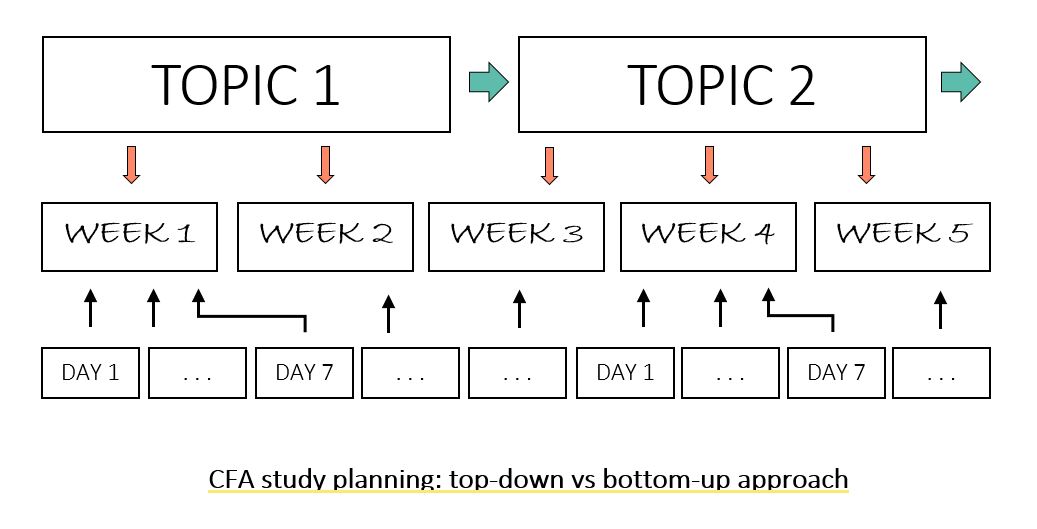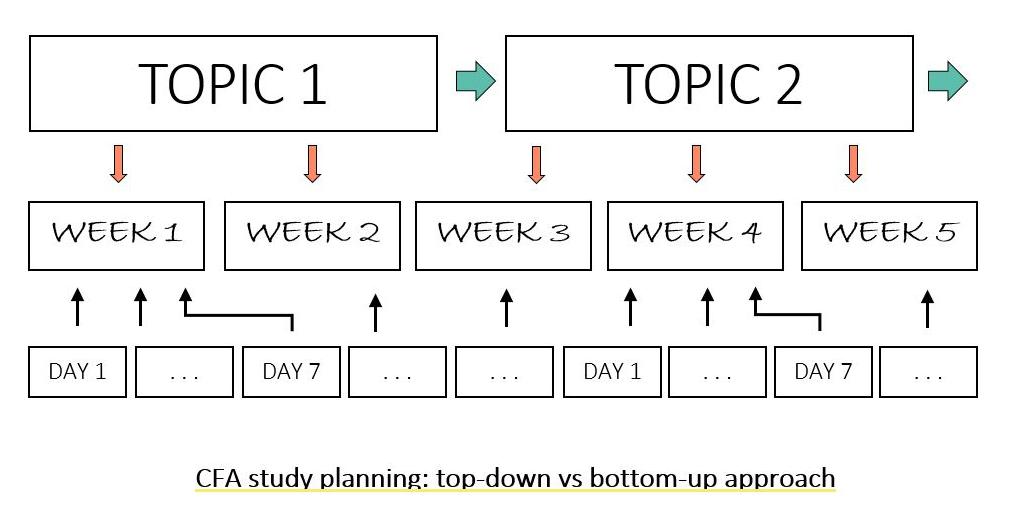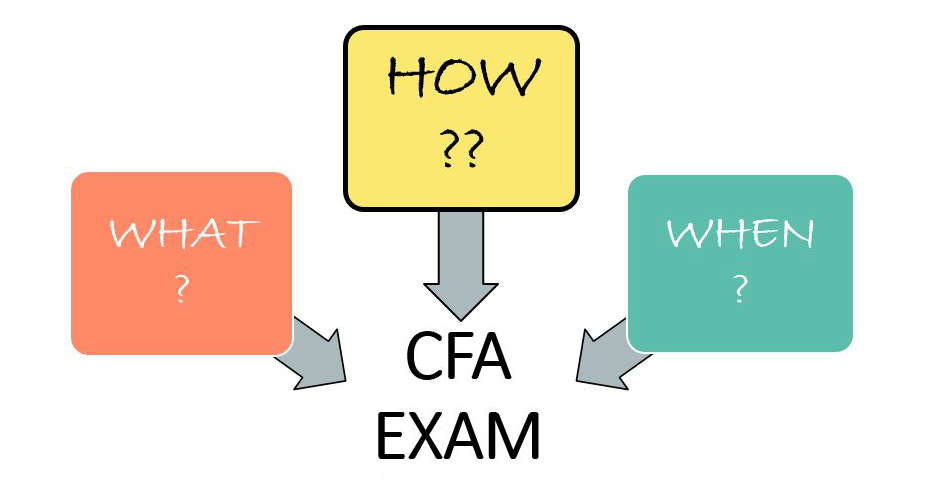
Quit it! Quit it right now! I mean it!
You can’t go on like that if you want to make it.
The CFA designation will not be handed to you on a silver platter.
You need to quit your happy-go-lucky attitude if you want to pass your nearest CFA exam.
And you’d like to succeed, I can tell.
But are you ready?
I mean, I know you’re not done with the whole study content yet. You will surely find things that would still need a brush-up even a few days before your exam. Trust me.
What I mean is whether you’re mentally prepared to cope with the challenge. Have you thought through what we said last time about DISORGANIZATION and PROCRASTINATION? Are you determined enough and ready to grow up to your determination?
What you need to do is to organize your CFA exam prep allowing for roughly 300 hours of study time. Because DISORGANIZATION means chaos and chaos means failure.
Then, when you’re all set up, you can’t continuously fail to follow your plan. You need to stand up to your alter-ego, alias PROCRASTINATION, and gain the upper hand when it comes to the exam endeavor.
In this post, I’m about to tell you how to come up with a sound plan of your own aimed at ORGANIZATION and TIMELINESS.
There are 2 approaches that can be adopted for planning. One is the bottom-up approach, and the other is the top-down approach. If applied together, they’ll give you the best result.
Top-down Approach
The top-down approach comes first.
It’s about arranging all the 10 topics of the CFA Program Curriculum over time. You choose the time span. But you need to be sensible about it: it can’t be too long, and definitely not too short. Most likely you’ll choose 8 to 3 months of CFA exam prep. The next step is to divide your preparation time into some shorter study spans – ideally weeks. You need to determine how long exactly you’ll spend studying each topic.
When constructing your plan, you’ll need to take into consideration different variables such as topic weights or pages to read. Our CFA exam study planner can help you with that. When creating your study schedule, you mark the CFA exam topics as easy, moderate, or difficult. Based on your choices, topics are given an adequate time frame to be dealt with (you can even opt for exact study times allowing for your topic difficulty, topic weights, and pages to read for all your readings if you wish).
If you’ve already decided how long your CFA exam prep is going to be, you can also go here and have a look at our ready-made study plans which can make planning so much easier to you. They all apply the top-down approach and wait for your personal finishing touch, aka. the bottom-up approach.
Because, as I mentioned earlier, the two approaches work best in tandem.
Bottom-up Approach
The bottom-up approach is your individual way of going about your CFA exam prep on a daily basis. Now that you have a particular amount of weeks allotted to every topic, you must take your calendar and think what days exactly you can study and how many hours a week you need. In the end, all the study hours must add up to roughly 300 and the plan must be put into action. Efficiently!
OK. Let’s see how it can be done.
Say you’ve got 8 months. You want to learn on weekends only, 5 hours a day. That makes 10 hours a week and 40 hours a month. After 7 and a half months, your study time will amount to 300 hours. That’s great! You still have some extra time! Probably best if you still spend it studying. After all, the recommended 300 hours is just an estimation.
That’s why weekends are usually not enough... Seldom do candidates devote as many as 8 months to their preparation…
You’re saying 3 months? That’s challenging but not hopeless. 3 months mean 100 hours per month, which gives over 3 hours a day or a bit more than 6 hours every other day.
DO YOU WANT:
- weekly study time estimated?
- readings (learning modules) with study times?
- study tips for building your study routine?
GET MORE THAN JUST A PLAN!
You’re telling me your calendar is too full for all these study hours?
I’ve heard that before. But you’ll be surprised how stretchable your daily agenda is.
You can get up earlier or schedule some evening study hours, whichever you prefer (or do both?). On weekends, study as much as you can (even up to 8 hours a day). On working days, make use of every free moment you have: when going to work, at lunchtime, or while waiting for a friend at a pizzeria. Plus, a fortnight’s leave just before the exam would be a good idea. It would give you some time to comfortably review the study content.
Also, you’ll need to be flexible at times, meaning you’ll have to make sacrifices. Sometimes ultimate ones.
Though I know it is difficult and feels unfair to cut down on time spent with your family and friends, I’m afraid you’ll need to give up some weekend parties, the movies, or meetings at pizzerias. Actually, if you’re reeeally lacking time, it’s best if you order that pizza home and meet your friend after your exam. Both of you will be feeling heartbroken about this, I know. But look at it this way: it’s only for some time and then it’s all over (at least, till your next exam prep ;/…).
Top-down + Bottom-up = Your Holistic Approach
YES! It is fundamentally crucial that you stay true to how you organize your everyday agenda. Because based on this holistic approach (general top-down + individual bottom-up) you can actually start hoping for success in your nearest exam. This time you have a reasonable basis for it.
holistic approach:
general top-down + individual bottom-up
where:
top-down approach = your total preparation period divided into 10 topics arranged to study weeks
(inside our study planner)
bottom-up approach = individual way of going about your CFA exam prep on a daily basis
I know too well that keeping schedules is damn hard. Sometimes our schemes just fall apart. If you notice that happening to your CFA exam study plan, act quickly. Diagnose the reason and apply the cure.
Actually, your plan will need a tweak now and again. It’s practically impossible for you to create a study plan that will never fail you. Aware of that fact, it’s best if you verify your plan on a weekly basis and change it if needed. But only if needed! And when revising, still keep in mind both the bottom-up (study hours distribution and enforcement) and the top-down (managing topics in weekly intervals) approach assumptions.
WHILE USING OUR STUDY PLANNER:
- over the week:
mark readings as done or partially done - on Sunday:
sum up your current study week - when needed:
edit a week: add or remove readings (learning modules)
I hope it all helps.
Now, you can effectively build your preparation strategy and do it consciously. All you need to do is handle all 10 topics throughout your study time giving each the required quota of study hours. By keeping an eye on your study progress, you can amend your plan when necessary and still be confident you’re on the right track.
A piece of pie. That study planning.
Or, at least, not as hard as it may seem. But I know what can give you a hard time... Creeping up on you like a shadow… PROCRASTINATION…
HEY! But great oaks from little acorns grow.
It’s your assertive everyday NO to PROCRASTINATION and your powerful everyday YES to TIMELINESS that will take you through your CFA exam prep successfully.
Now, it’s all up to you…
About Soleadea:
Our CFA Exam Study Planner is available to candidates of all levels at groundbreaking Pay-What-You-Can prices. You decide how much you want to pay for our services. After you activate your account, you get unlimited access to our Study Planner 4.0 with study lessons inside (level 3 to come), various level 1/level 2 study materials & tools, regular review sessions, and a holistic growth approach to your preparation. Join




